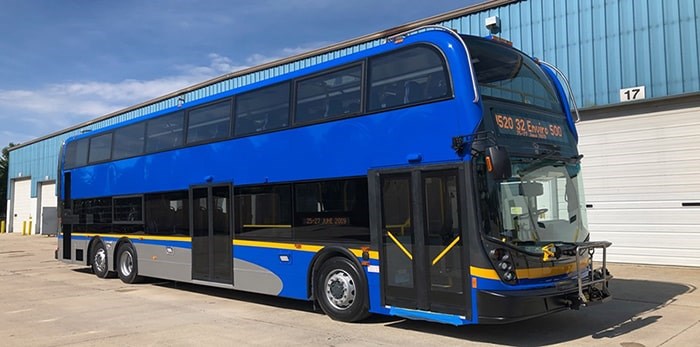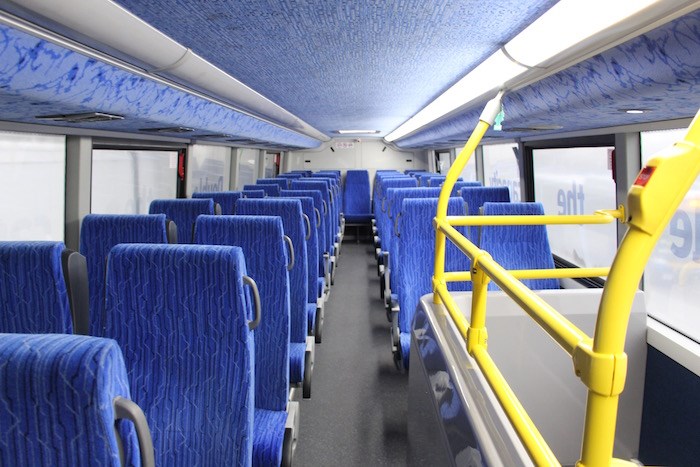 You’ll be able to ride a double-decker TransLink bus this fall. Photo: TransLink Facebook
You’ll be able to ride a double-decker TransLink bus this fall. Photo: TransLink Facebook
If you've been wondering just when you might be able to catch a ride on one of those new double decker TransLink buses, the wait is almost over.
TransLink confirms that they are in the final testing phases of the eye-catching new vehicles, with plans to roll out several of the new double deckers "very, very soon," according to a spokesperson.
There were 32 double decker buses in the initial order. This July, TransLink announced the newest members of the fleet were on their way to Metro Vancouver.
The double decker buses will be based out of the Richmond Transit Centre, where they've made renovations to accommodate the two-level vehicles.
Once they've completed their rigorous testing and operators are fully trained, they'll go into revenue service, which is likely to be before the end of the month.
Only a few of the 32 will enter service to begin, and they will be on the 301 (Newton Exchange/Brighouse Station) and 620 (Bridgeport Station/Tsawwassen Ferry) routes.
In the new year, double decker buses will join the 555 (Carvolth Exchange / Lougheed Station) route. Plans to put the double deckers on the 601 route have been set aside, as portions of the route in Ladner and Tsawwassen lack the overhead clearance for the buses.
The double decker buses were brought into the fleet to help phase out the current highway coaches that are at the end of their useful life to the transit agency, and, in part, to augment TransLink's overall fleet serving Metro Vancouver.
 The upper seating (Lindsay William-Ross/Â鶹´«Ã½Ó³»)
The upper seating (Lindsay William-Ross/Â鶹´«Ã½Ó³»)
On the 620 route, which is currently serviced with articulated buses, the double deckers will enter into the fleet rotation, while some of the articulated buses will get put on other routes. For routes served by retiring , the double decker buses will outright replace those older buses in TransLink's fleet.
The launch comes after a successful four-month pilot project back that started in November 2017, and offers riders almost double the seats of a highway coach. In addition, guests will be able to use plug-in USB charging outlets in the new buses.Â
The double deckers also provide panoramic views from the upper deck, staircases with handrails to maximize safety, and full accessibility with a low floor and boarding ramp. Further, TransLink has installed screens that allow customers to see vacant seats before going upstairs.Â
With files from Elana Shepert


